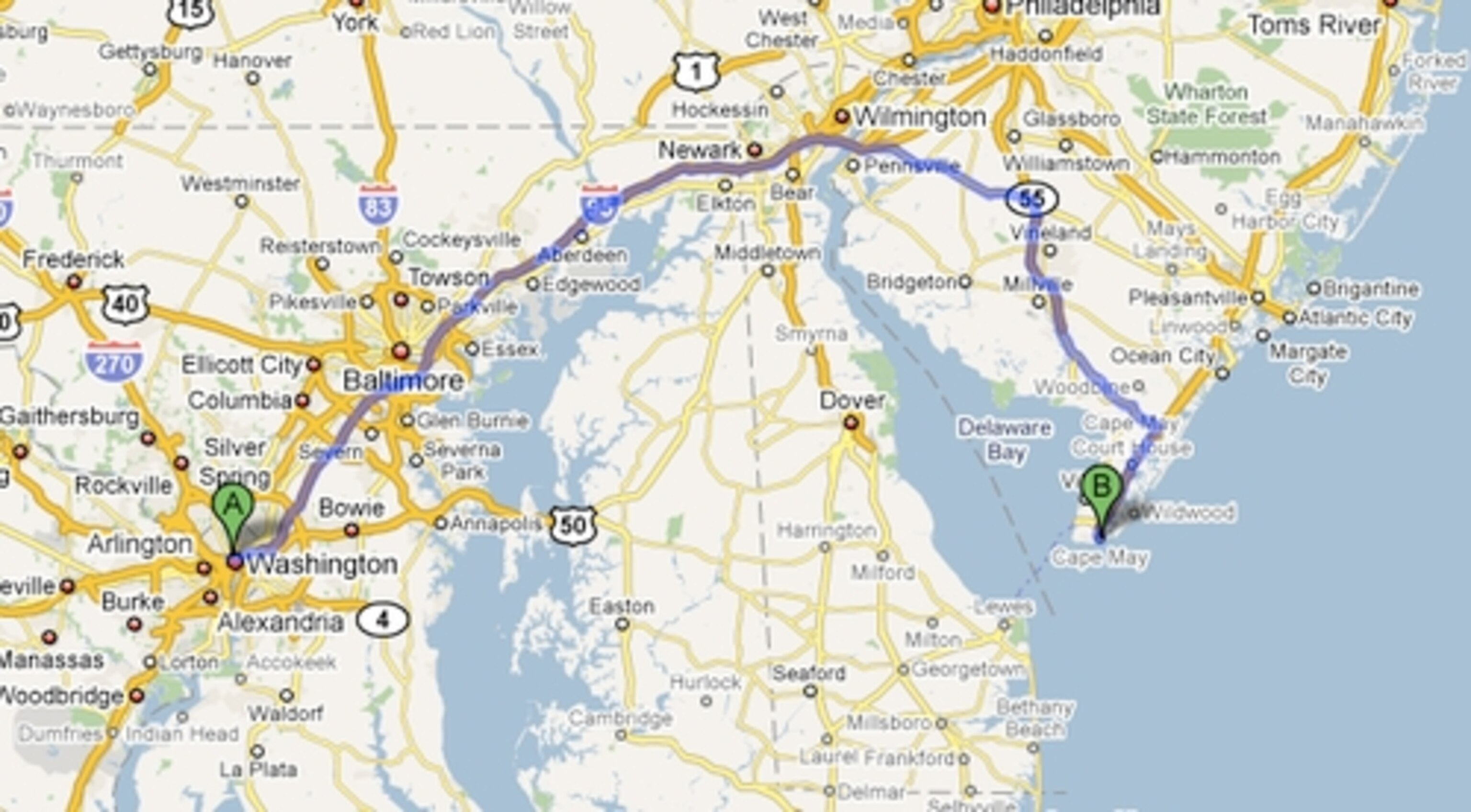
Counterintuitive Geographic Facts and Other Minutiae
While vacationing with my family one summer in Cape May, New Jersey, my dad confidently asserted that contrary to what you might think, Cape May is actually farther south than Washington, D.C. He was proud to have unearthed this seemingly counterintuitive geographic fact.
Being the fact hound that I am, I had to check it out. Turns out, he’s almost right. According to the U.S. Gazetteer, the latitude of Cape May, New Jersey, the Garden State’s southernmost tip, is actually 38.96 degrees north while our fair National Geographic Headquarters in Washington, D.C., is 38.90 degrees north. Seeing as latitude increases the farther north of the equator you go, Cape May isn’t, in fact, farther south than D.C, but it’s pretty darn close. (Sorry Dad.)
I have to admit it took me awhile to pin this down since I’d last learned about latitude and longitude in middle school. A quick refresher for those too timid to ask: Latitude, the horizontal lines on a map of the earth, marks the angular distance in degrees of points north and south of the equator. Longitude, the vertical lines on a map, indicates the angular distance of points east and west of the prime meridian located in Greenwich, England.
Got it? Okay, how about some more mind-numbing geographic facts having to do with longitude and latitude and time zones? China, despite spanning four time zones and a longitude of about 60 degrees, actually has only one official time zone. Typically, one time zone spans about 15 degrees, roughly a time difference of one hour. When the sun reaches its highest point at 12 noon in Beijing, what time is it when the sun reaches its zenith in the westernmost part of the country? Eight a.m. Makes me wonder how this one time zone affects life in areas beyond the capital.
Russia, the world’s largest nation in terms of area (8,649,500 square miles), occupies 11 time zones and spans about 6,200 miles. Its longitude range is 165 degrees as it’s farther north than China and time zones narrow at latitudes closer to the poles. Imagine if Russia used only one time zone? Incredible.
Moving back to the western hemisphere, Valparaíso, Chile is in the same time zone as NG Headquarters, despite being on a different continent. Yet Valparaiso, Indiana, in our good olde US of A, about 60 miles southeast of Chicago and named for its Chilean counterpart, is one hour behind eastern daylight savings time. Valparaíso, Chile, the beloved home of poet Pablo Neruda, is -4 GMT and currently not in daylight savings time; daylight savings begins October 10 and ends in mid-March, the opposite of how things work closer to home. Valparaiso, Indiana, is in the Central time zone and -5 GMT during daylight savings time.
- National Geographic Expeditions
Whew! If your brain isn’t already in a twist, impress us by sending along your very own counterintuitive geographical fact or tell us a personal experience about traveling, traversing time zones, and the mess that can come of combining the two.
Photo: Google Maps
Meg Weaver is a Senior Researcher for National Geographic Traveler.
